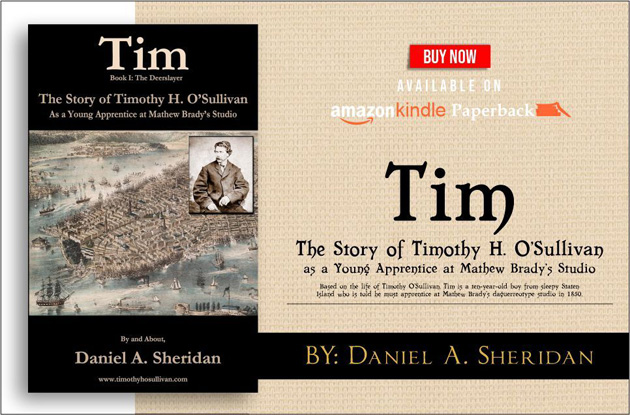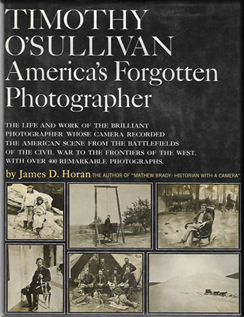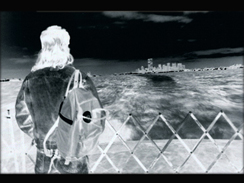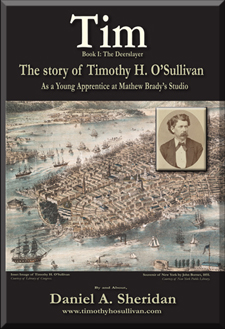Inscription Rock - Timothy H. O'Sullivan
by Daniel A. Sheridan
History of Photography - Professor Silver
New York University
February 20, 1989:
One example of a photograph that conveys a powerful sense of the past is Timothy H. O'Sullivan's "South Side of Inscription Rock, New Mexico No. 3" (1873) which utilizes the camera's obsession with minute, convincing details. The sheer strength of O'Sullivan's photograph lies not so much in the composition or the subject, as it does in the content. In one respect, O'Sullivan merely shows the face of a rock with an inscription on it, yet in another he provides rock hard evidence that the Spanish conquistadors were in New Mexico 350 years before O’Sullivan even got there.
O'Sullivan's composition is nearly as two dimensional as the printed page for he primarily wants the observer to read the inscription on the rock. Proficiency in the Spanish language is not required to appreciate the full impact of O'Sullivan's photograph. The essential information is easy enough understood, the conquistador's name: Joseph de Payba and, more importantly, the date: February 18, 1526. In addition to this, O'Sullivan provides other useful information such as scale and location to put the inscription into context.
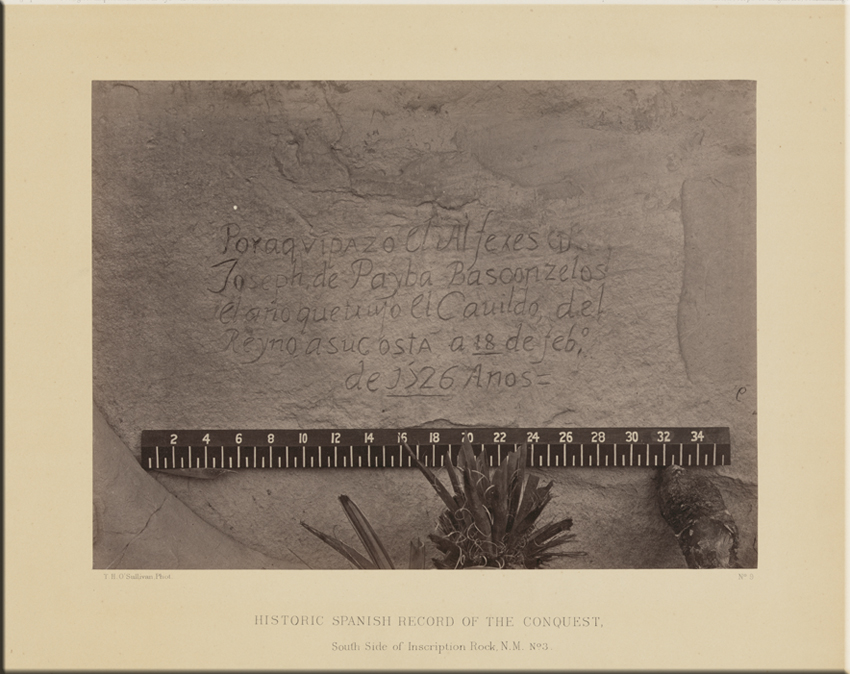
Just as Maxime Du Camp would use a standing figure to give scale to his photographs of the ancient Egyptian statues, O'Sullivan makes blatant use of a yardstick as a legend to aide in reading his photographic map. Without the yardstick running parallel to the ground, it would be difficult to tell if the lettering on the rock were as large as that on a billboard or as small as the lettering on a coin. Instead, with the yardstick, O'Sullivan visually tells us that each sentence is approximately 24 inches long.
Also, by cleverly supporting the yardstick on the face of the rock with what appears to be the leaves of a cactus plant. O'Sullivan sets the scene in the desert of the American Southwest. Since O'Sullivan knew the importance of using props to tell a story from his days as a Civil War photographer. It is unlikely that he used the cactus leaves purely out of necessity in holding up the yardstick. O'Sullivan wanted the observer to know that this conquistador did not chisel his name into a rock in Central Park but in the desert of New Mexico.
O'Sullivan conveys this powerful sense of America's past with the glass negative's ability to capture the texture of stone in the same way that Fox Talbot photographed his collection of crystal. A painting of a rock pales in comparison to a photograph's ability to create the tangible effect similar to that of sculpture. O’Sullivan’s "South Side of Inscription Rock. New Mexico. No.3" seems more the result of a glass sculptured negative than it does of a glass painted negative.
Like a Doubting Thomas, we can almost run our hands over the sandy rocky surface, stick our fingertips in the grooves of the date the conquistador chiseled so long ago, and believe what we see. In addition to the historical significance of the inscription, O'Sullivan also brings home a glimpse of the conquistador's attitude towards the New World. Like a graffiti artist on the subway, the conquistadors like Cortez and Pizzaro wanted to leave their mark on the New World, and leave their mark they did.
